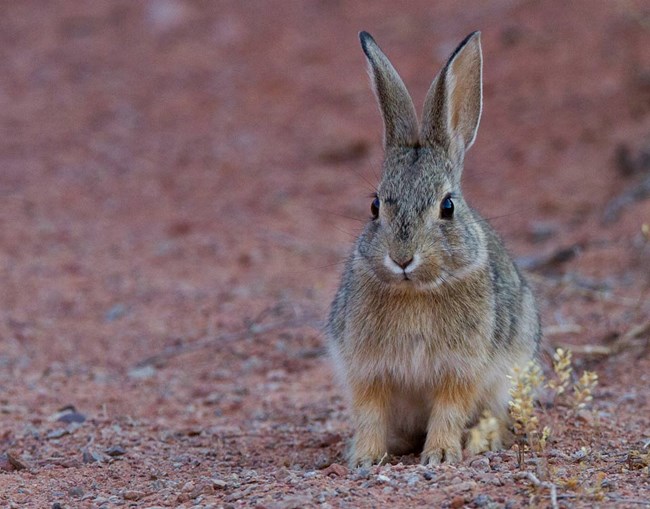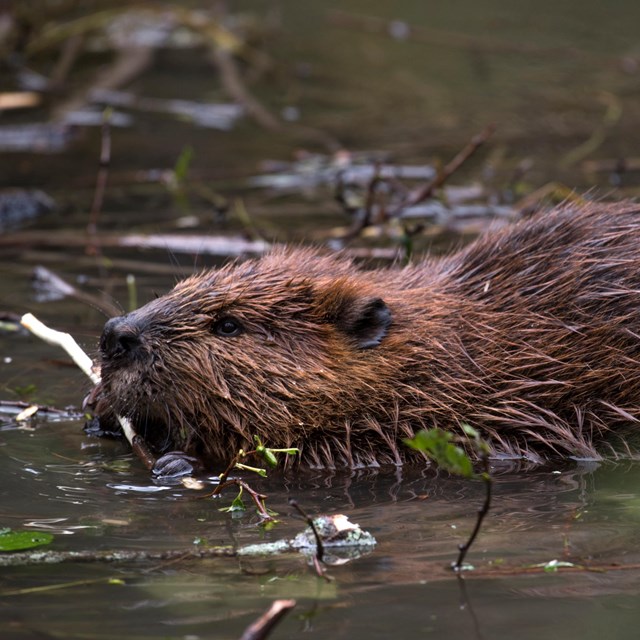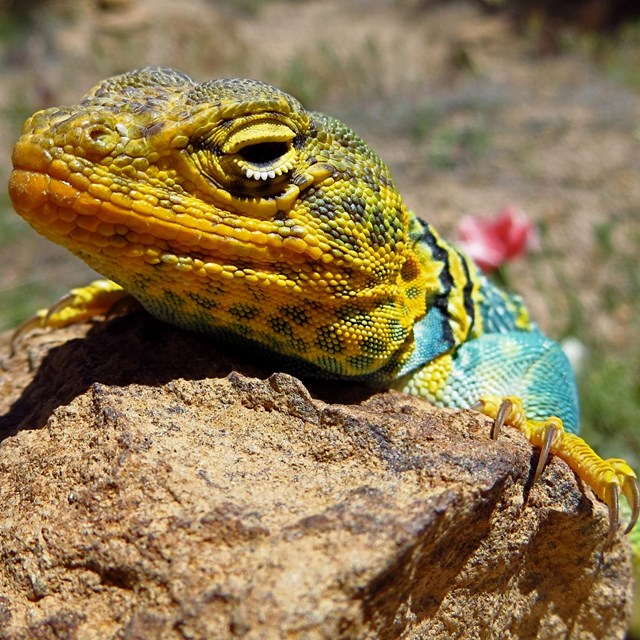
NPS photo Hovenweep is home to more than 150 species, including over 10 species of bats, 13 species of rodents, 11 species of lizards, 10 species of snakes, and 90 species of birds that live within the park’s 785 acres. Select a Park:Select a Species Category (optional):
Search results will be displayed here.

NPS photo by Jacob W. Frank What May I See?Visitors to Hovenweep may see and hear a wide variety of animals or none at all, depending on the time of day. Rodents and bats comprise the majority of the mammals found here because they are so well adapted to the harsh desert climate. Many of the rodents are active burrowers spending the hotter, drier hours of the day underground. Bats utilize canyon walls, cracks, and overhangs as daytime roosts. The heat radiated at night by these same walls provides an ideal temperature for the bats to fly and forage in. Common large mammals include mule deer, bobcat, mountain lion, and coyote, although visitors will typically never see a mountain lion or mule deer within the park itself. Birds are most numerous in cottonwood and willow vegetation along streams and water sources. Look for ravens on standing walls and in alcoves. In the spring, keen eyes will spot baby owls poking their heads out from the nest, with mom and dad nearby. On your way to the park, look for raptors, like hawks and golden eagles, on the tops of telephone poles. Cold blooded reptiles like snakes and lizards also thrive here, using the abundant sunlight to keep their bodies warm. The most common lizards are the side-blotched and sagebrush lizards. The most common snakes are the gopher snake, midget faded rattlesnake, and striped whipsnake. Amphibians are not common, found only near streams, springs, and rock pools. There are no fish. An official species list is available from the Northern Colorado Plateau Network. Animal SpotlightsRead about some of the most interesting and common animals found in the park. 
NPS photo CoyoteThough you may have difficulty spotting one, listen for the howls, barks, whines, and yips of the coyote. While their calls may send a shiver up your spine, these creatures are not to be feared and are likely more afraid of you! Their soul-piercing howls communicate location within a group or family. Other vocalizations may defend territory, call for pups, and protect dens. Coyotes are some of the most adaptable creatures in the world. Originally found in the northwest, coyotes now occur everywhere in the continental US, successfully taking over the former range of their cousin and major predator, the gray wolf (Canis lupus). 
NPS photo Desert CottontailWatch for cottontails hiding in the brushy desert scrub. Cottontails are named for the white patch of fur on their tail that resembles a cotton ball. They raise this white tail when danger is near, which serves as an alarm signal to other cottontails. These rabbits can run up to 20 mph in a zigzag pattern to escape predators! Cottontails belong to the order of mammals called rodents - a group of animals whose teeth never stop growing! Rabbits use their sharp, ever-growing teeth to nibble twigs and grasses- their favorite foods. These furry critters keep themselves cool in the hot desert sun by radiating body heat through their large ears. 
NPS photo Tarantula HawkThis large wasp with a metallic blue-black body and orange wings can grow up to 3 inches long. Tarantula hawks (Pepsis sp.) are so named because, other than humans, they are the tarantula’s main predator. When a female is ready to lay her eggs she finds a tarantula and attacks, stings, and paralyzes it so that she can drag it back to her burrow. There she lays a single egg on the tarantula’s abdomen, exits the burrow, and seals the chamber. When the egg hatches the tiny grub feeds on the tarantula until fully grown by which time the spider is dead. Watch out for these powerful insects! They are much more venomous than the tarantula they hunt and have one of the most painful stings of any insect around. 
NPS photo RavenThe largest bird of the crow (Corvid) family, ravens stand up to a foot tall! Ravens are considered among the most intelligent of all birds. They can learn to imitate a variety of sounds including the human voice and their curious, observant nature will be apparent to anyone who takes the time to notice. Ravens have a diverse appetite which can include carrion, mice, lizards, small birds, snakes, insects, and berries. Perhaps it is their broad diet that allows them to thrive in a number of different habitats ranging from treeless tundra to mountain forests to the desert canyons here at Hovenweep. 
NPS photo Whiptail lizardLook for these lizards darting and dashing around in search of food during summer days. Unlike most lizards, which employ the “sit-and-wait” hunting method, whiptails are active foragers. These lizards are easy to identify as their tail is up to 2.5 times as long as their body! Whiptails flick their forked tongues out into the air an average of 460 times an hour. The Jacobson’s organ, located on the whiptail's tongue, sends vital information about food, courtship, and communication directly to the brain. Safe Wildlife ViewingNever approach or handle wildlife of any kind. Keep all food stowed, especially in campsites. Wild animals often carry deadly diseases, including hantavirus, bubonic plague and rabies, and may become aggressive without warning. Do not approach animals to take photographs and teach children not to chase or pick up animals. Learn MoreYou can explore these subjects from national parks around the country. Related Articles |
Last updated: April 29, 2025



